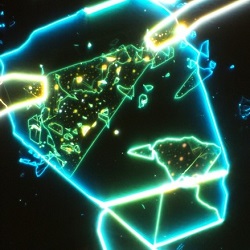
Quantum computers will be so powerful that they will revolutionise our society as much as computing itself has already done. Think how much of a shift that has been. But what will this technology look like?
The next generation of computers are called quantum computers. They are able to model every system imaginable. They can do computations faster than current computers by billions of years.
Our laptops have small chipboards inside them which store little bits of information, and do tiny operations that make the computer work. They are minute switches that turn on and off – storing a 1 or a 0 respectively, and hence making what is known as the binary code that computers function in.
Quantum computers are similar to current computers in that they will also store information and make operations and models. However, they work in an entirely different way. Instead of tiny switches, the information is stored, for example, by single particles such as electrons. Electrons have a quantum property called spin. We can envisage them as rotating upon themselves all the time, in one direction or the other. We can encode a 0 in a left-handed spin, and a 1 in a right-handed spin. To do this however, one needs to isolate a single electron.
In my research at the Department of Physics at the University of Cambridge, we have found a way to do this using two-dimensional material. A 2D material is an infinitely thin sheet of material: in fact, only 1-atom-thick. Electrons travel freely, in thousands of billions, through this material. Cutting-edge research has proven that by creating tiny dimples in this material, and cooling it down to -300oC, electrons can fall into these dimples. These are called quantum dots, and they are so small, that they effectively have zero dimensions; only one electron per quantum dot. This grid of quantum dots will be the chipboard of the future.
This new array of quantum dots has two very useful properties. The first one is that we have shown that they can emit exactly and only 1 photon at a time. A photon is the particle that carries light. Single-photons are an intrinsic requirement to ensure the safety of quantum encryption protocols. Secondly, we have also shown that you can control this electrically – by sending electricity through contacts. These contacts are in fact also 2-dimensional – a whole quantum device that is only a few atomic layers thick!
Why is this better than ordinary or ‘classical’ computing? It’s not just to do with size. It’s to do with the laws of quantum mechanics. Remember Schrodinger’s cat, who can be dead and alive at the same time? Well, an electron can be spinning left and right at the same time. If you have two electrons and create a quantum relationship between them, this means that their spins will be inextricably linked together, or ‘entangled’ and so they will be in 4 states at the same time. This means twice the information stored in them. This behaviour scales exponentially with the number of quantum dots, meaning that with only a few of them one can already store more information than in our current supercomputers.
The fact that this relies on quantum entanglement (as Einstein called it, ‘spooky action at a distance’) is also the reason for it to be incredibly hard to realise. These quantum states and quantum relations between particles are incredibly fragile.
Carmen Palacios Berraquero
NanoDTC PhD Student 2013
Department of Physics

